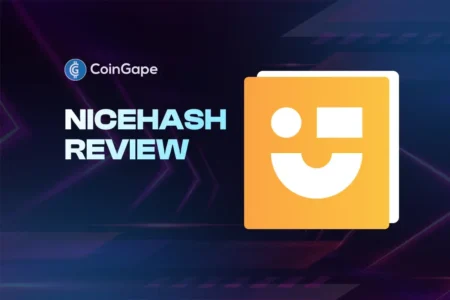The Evolution of Cryptocurrency: Bridging the Gap to Everyday Use with Deobanks
Cryptocurrency has transformed the financial landscape significantly over the past fifteen years, presenting countless opportunities for users. Initially, it introduced peer-to-peer transactions, decentralized banking, and alternatives for achieving financial autonomy, capturing the attention of millions globally. Despite its potential, various challenges have hindered widespread adoption, including the complexities of managing multiple coins, wallet address ambiguity, and fluctuating network fees. For instance, many consumers are still hesitant to utilize cryptocurrencies like Bitcoin or Ethereum for daily purchases, opting instead for the convenience of traditional payment methods. The pathway to seamless integration and mass usability for digital currencies is still laden with obstacles, yet the emergence of Decentralized On-chain Banks (Deobanks) may offer solutions to these persisting issues.
At the heart of the cryptocurrency adoption challenge lies a disconnect between the on-chain assets of the digital ecosystem and the off-chain realities faced daily by consumers. Even as advocates for decentralization push the narrative forward, most individuals find themselves converting digital assets into fiat currencies merely to engage in everyday transactions. This bottleneck effect is propagated by a lack of merchants willing to accept cryptocurrencies directly, necessitating reliance on centralized exchanges and off-ramps that impose exorbitant fees and delays. Furthermore, managing cryptocurrency wallets can be complex and intimidating, driving users to prefer centralized exchanges despite the inherent risks. Thus, for cryptocurrency to gain traction, it must overcome its image as a speculative asset and prove its practicality in everyday life.
Deobanks present a promising solution to this usability crisis. These innovative institutions prioritize user experience in their design, distinguishing themselves from traditional banks and centralized exchanges. Deobanks aim to reshape how cryptocurrencies are perceived by transforming them into accessible, spendable forms of money. With features like stablecoin support, custodial and non-custodial options for fund storage, and fast payment integrations without costly intermediaries, Deobanks are set up to drive the mainstream adoption of digital currencies. For example, stablecoins—cryptocurrencies pegged to fiat currencies—provide consistent purchasing power, mitigating the volatility that typically deters merchants from engaging with cryptocurrencies.
One prominent example of a Deobank leading the charge is WeFi, which seeks to make cryptocurrency usable for everyone. According to WeFi’s Group CEO, Maksym Sakharov, the fragmented nature of the current financial system invites confusion and complexity, emphasizing the need for a seamless and intuitive ecosystem to facilitate mass adoption. He notes that bridging the gap between traditional finance and cryptocurrency requires not only technological advancements but also a paradigm shift in user mindset. This is where the true innovation of Deobanks lies—they offer tools and services that simplify the user experience while providing robust security features.
Stablecoins play a crucial role in this paradigm by enabling predictable spending. Unlike traditional cryptocurrencies, which are subject to significant price fluctuations, stablecoins ensure merchants and users retain their purchasing power, aiding in successful transactions without the fear of sudden devaluation. For instance, a merchant accepting Bitcoin for a $1,000 sale can experience a decline in value leaving them vulnerable to financial loss. In contrast, stablecoins like USDC maintain a steady value, empowering users to interact confidently and efficiently with their digital assets. Deobanks utilize stablecoins not only for purchases but also for programmable transactions, advancing automation and increasing overall convenience for users.
Additionally, crypto cards associated with Deobanks represent a groundbreaking step towards mass adoption. Millions engage in daily transactions using debit or credit cards—integrating crypto balances into this familiar framework significantly boosts accessibility. Deobank-issued crypto cards are directly linked to non-custodial wallets, eliminating reliance on third-party custodians and allowing users to retain full control over their digital assets. WeFi, for instance, promotes an experience where users can link their wallets to cards and spend crypto without the complexities of manipulation or conversion—streamlining everyday use while maintaining security.
In summation, the road to widespread cryptocurrency adoption leans heavily on the innovative solutions proposed by Deobanks like WeFi. By merging stablecoin stability, user-friendly wallet management, and the simplicity of crypto cards, these institutions are working to bring cryptocurrency into the standard daily routine of users. As the lines between digital and traditional economies blur, the vision of cryptocurrencies evolving into commonplace payment methods draws closer. With ongoing advancements, the future suggests a time when cryptocurrencies are not merely investment assets but integral components of everyday financial interactions, redefined and reinvigorated by the transformative influence of Deobanks.
















